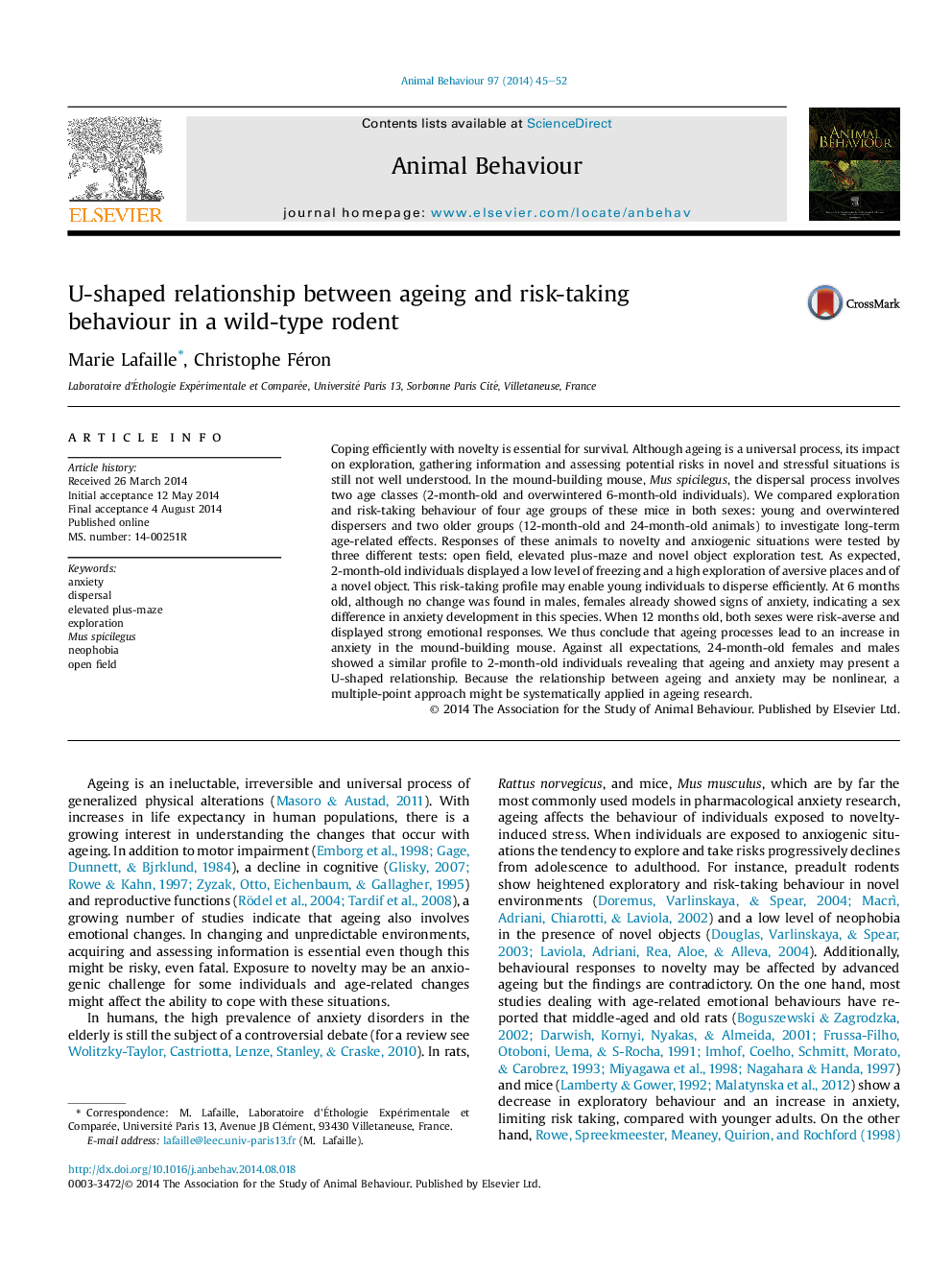| Article ID | Journal | Published Year | Pages | File Type |
|---|---|---|---|---|
| 8490274 | Animal Behaviour | 2014 | 8 Pages |
Abstract
Coping efficiently with novelty is essential for survival. Although ageing is a universal process, its impact on exploration, gathering information and assessing potential risks in novel and stressful situations is still not well understood. In the mound-building mouse, Mus spicilegus, the dispersal process involves two age classes (2-month-old and overwintered 6-month-old individuals). We compared exploration and risk-taking behaviour of four age groups of these mice in both sexes: young and overwintered dispersers and two older groups (12-month-old and 24-month-old animals) to investigate long-term age-related effects. Responses of these animals to novelty and anxiogenic situations were tested by three different tests: open field, elevated plus-maze and novel object exploration test. As expected, 2-month-old individuals displayed a low level of freezing and a high exploration of aversive places and of a novel object. This risk-taking profile may enable young individuals to disperse efficiently. At 6 months old, although no change was found in males, females already showed signs of anxiety, indicating a sex difference in anxiety development in this species. When 12 months old, both sexes were risk-averse and displayed strong emotional responses. We thus conclude that ageing processes lead to an increase in anxiety in the mound-building mouse. Against all expectations, 24-month-old females and males showed a similar profile to 2-month-old individuals revealing that ageing and anxiety may present a U-shaped relationship. Because the relationship between ageing and anxiety may be nonlinear, a multiple-point approach might be systematically applied in ageing research.
Related Topics
Life Sciences
Agricultural and Biological Sciences
Animal Science and Zoology
Authors
Marie Lafaille, Christophe Féron,
